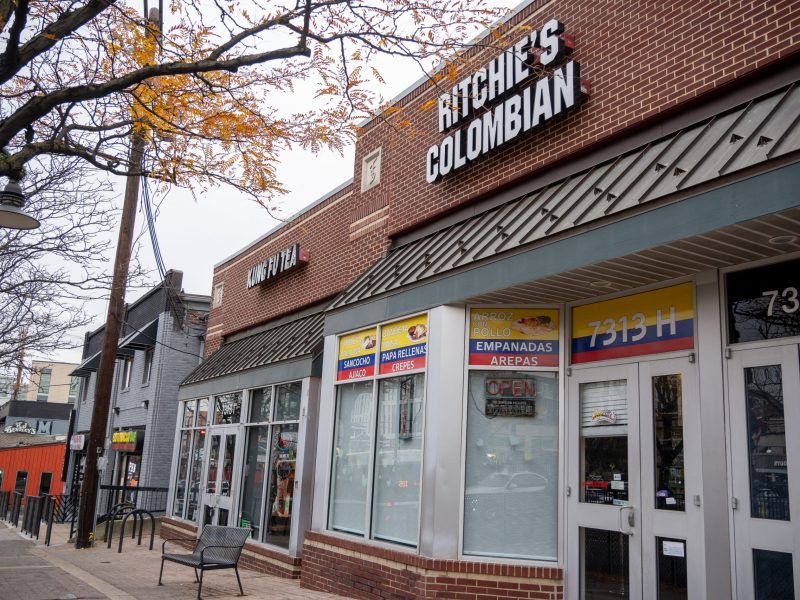While some have expressed frustration after the long-awaited Purple Line faced another delay, University of Maryland’s Department of Transportation said it will look for solutions to combat campus transportation issues despite the project’s setback.
The 16.2-mile light-rail system would run from Bethesda to New Carrollton and pass through College Park. Its completion was initially scheduled for 2022, according to the Maryland Transit Administration’s website.
U.S. District Judge Richard J. Leon called into question the effect that a recent decline in Metro ridership would have on the project’s presumptive plans in a May 22 ruling, which prompted Maryland Department of Transportation Secretary Pete K. Rahn to order contractors to suspend the Purple Line’s pre-construction efforts last week as the state appeals the ruling, The Washington Post reported.
DOTS Executive Director David Allen said whether or not the Purple Line faces a setback, the department is in the process of creating a series of measures to reduce the number of single-rider vehicles coming to the campus.
[Read more: DOTS seeks to reduce number of parkers to accommodate decrease in parking spaces]
“We’re going to be bolstering our transportation [and] parking to make coming to campus easier for students, visitors and employees, with or without the Purple Line,” Allen said. “It’ll be great if it’s with, but if not, we’ll push on.”
Anna McLaughlin, DOTS assistant director, said a web-based commuting platform effort will be launched in September to offer an easy, efficient way for this university’s students, staff and faculty to find ride-sharing opportunities to and from the campus.
DOTS has been working with the ride-sharing company RideAmigos to allow users to be able to view convenient commuting options to and from the campus, whether by bus, bike or Metro, said McLaughlin.
The tool will also show this university’s staff, students and faculty carpooling options based on nearby addresses and compatible work schedules, McLaughlin said.
“You won’t be able to see anyone’s personal information,” she said. “But people will be able to say, ‘Oh look, there’s a dozen people living right by me who have basically the same schedule as me.'”
For this reason, the platform’s success depends on how many people are actively signing up and using it, McLaughlin added.
“Right now we’re working with RideAmigos to customize it, and to get all the local transit and transportation information specific to the university into the system,” McLaughlin said.
The “millions and millions of dollars” it would take to build an additional garage to house more vehicles on campus does not seem financially or sustainably beneficial in the long run, she added.
“Instead, we could spend a couple hundred thousand dollars and increase shuttle service and incentive programs,” McLaughlin said. “If we can get people not to drive instead, we’ll have less demand and parking fees won’t rise as much.”
This university and College Park’s joint bike-share program mBike — in collaboration with bike-sharing company Zagster — has also announced an expansion of 163 bikes at 19 stations around College Park, according to a May press release.
[Read more: A year after its launch, College Park’s bike-share program will expand to University Park]
The recent court order requires the state to reassess Metro ridership numbers, accounting for the decline of passengers in recent years, The Post reported. During this time, the state will be blocked from receiving $900 million in federal aid from President Trump’s proposed 2018 budget. The Purple Line is projected to cost more than $2 billion.
Metro ridership was down by 12 percent — over 100,000 trips each weekday — compared with its peak in 2009, WTOP reported in February.
Constructing the Purple Line has been a topic of discussion for too long, said sophomore public policy major Andrew Stover, who has waited for the state to reach a decision for or against the project since joining this university last fall.
“While I find it unfavorable, [the ruling] has brought the issue to the forefront of Maryland politics, and hopefully we are going to see some closure here soon,” Stover said. “Not enough has been done as far as transportation in this area of Maryland, and while I don’t think the Purple Line is perfect, I support it. It could do a lot of good for the low-income people in PG and Montgomery counties, as well as students and faculty in Maryland.”
Junior Hannah Lee said while she thinks this university’s nearby College Park Metro Station is a convenient enough method of transportation, making the Purple Line unnecessary, terminating the project now would result in a huge spending loss.
On May 31, the Maryland Department of Transportation wrote in a statement that with its “unknown timeline for an appeal” and “dwindling available cash to carry the federal reimbursable costs being expended by MDOT,” executing the project any further would put taxpayers and the state at a potential financial risk.
“Having construction that runs right through campus is going to completely uproot things and make it hard for students to travel from north to south campus,” said Lee, a behavioral and community health and psychology major. “On the other hand, the Purple Line would be great for commuters, and I know it would really help people in Silver Spring and other areas get around, and whose properties near the proposed stops would increase in value.”



